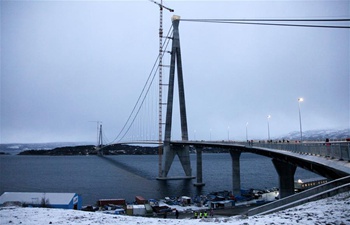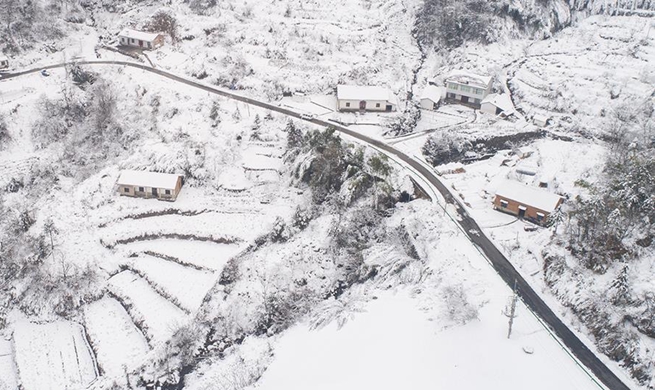WASHINGTON, Dec. 10 (Xinhua) -- The analysis on data obtained by NASA's OSIRIS-REx spacecraft revealed that water was locked inside the clays of its target asteroid Bennu.
The findings, published on Monday at the American Geophysical Union's annual meeting, confirmed the presence of molecules that contain oxygen and hydrogen atoms bonded together on the 500-meter near-earth object, now about 122 million kilometers from Earth.
The United States space agency's spacecraft rendezvoused with its targeted asteroid Bennu last week after a two-year space travel. The spacecraft measured the asteroid from mid-August and early December, according to NASA.
The scientists suspected that these hydroxyl groups exist globally across the asteroid in water-bearing clay minerals, implying that at some point, Bennu's rocky material interacted with water.
Because Bennu itself is too small to have ever hosted liquid water, the liquid water was present at some time on Bennu's parent body, a much larger asteroid, according to them.
"The presence of hydrated minerals across the asteroid confirms that Bennu, a remnant from early in the formation of the solar system, is an excellent specimen for the OSIRIS-REx mission to study the composition of primitive volatiles and organics," said Amy Simon, scientist at NASA's Goddard Space Flight Center.
"When samples of this material are returned by the mission to Earth in 2023, scientists will receive a treasure trove of new information about the history and evolution of our solar system," said Simon.
The spacecraft also discovered a large boulder near Bennu's south pole, closer to 50 meters in height, about 55 meters in width, which is larger than expected.
Bennu's surface material is a mix of very rocky, boulder-filled regions and the quantity of boulders on the surface turned out to be higher than expected, according to NASA.
The spacecraft will move in close to the asteroid, extend its sampling arm, and touch its surface for just five seconds to collect loose material before returning it to Earth in 2023.
The mission team said they would make further observations to decide where a sample can be taken on Bennu.













